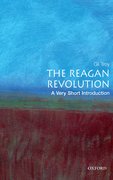The Dirty Dozens
English has two great rhyming slanguages, cockney rhyming slang and the dozens, the African American insult game. We’ll leave the parsing of cockney phrases for now and examine the dirty, bawdy, and wonderful world of verbal street duels. While its origins lie in “yo’ mama” jokes, this is language meant for music, as rap and hip-hop today can attest. Here’s a taste with an excerpt from Elijah Wald’s The Dozens: A History of Rap’s Mama.











